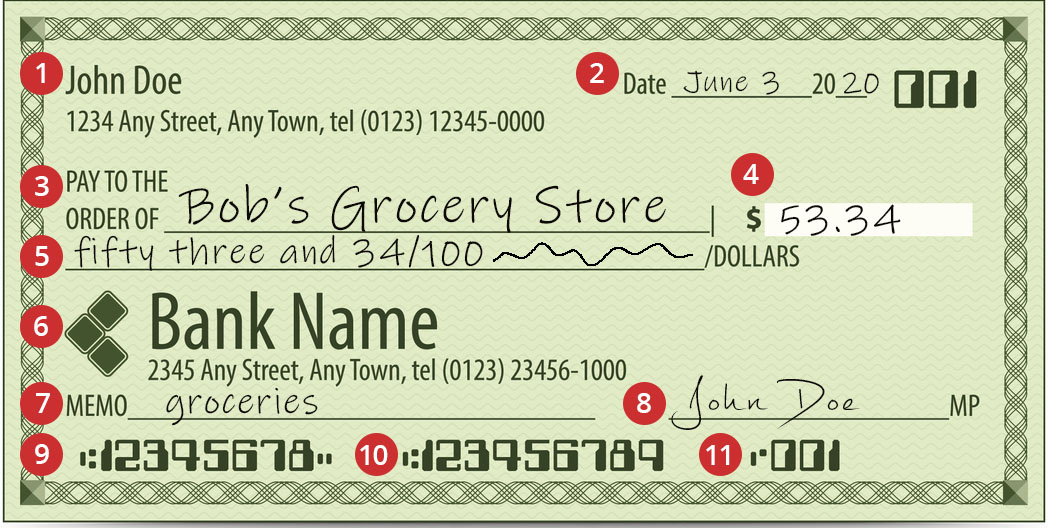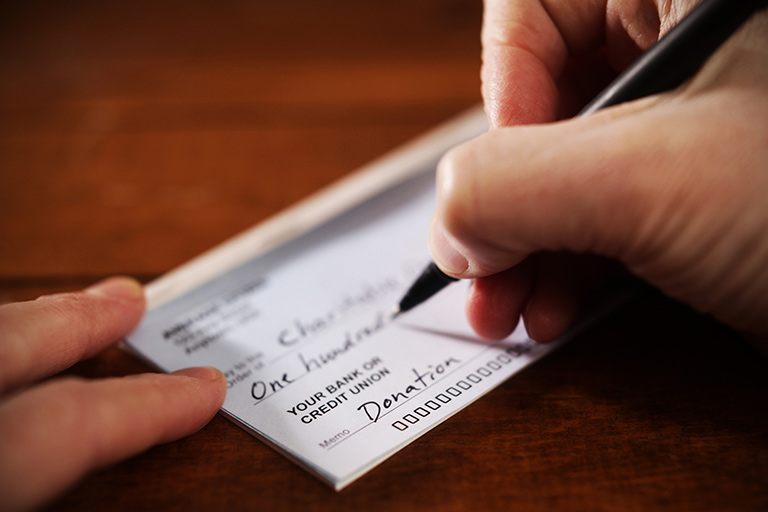Financial Education: Checks – What Are They and How to Use Them
Although checks aren’t used as much as they once were, they are still a universally accepted way to send and receive money. Knowing what a check is and how to use them is an important part of financial education.
Because checks were rapidly replaced with electronic methods of payment over the last several years, a surprising number of people aren’t very familiar with them. Some people may have never even seen one.
Do you know what a check is and how to use one?
We’re going to fill you in on the basics of a check so that if you want or need to, you’ll know how to use one.
What is a Check?
A check is a signed paper document that instructs a bank to pay a person or place (like a store or a utility company) a specific amount of money from a specific checking account. Basically, it’s a way of transferring money from one place to another.
Where Do I Get Checks?
If you open a checking account at a financial institution, they will usually provide you with checks. You don’t get checks with a savings account, only a checking account. You can also order checks with your checking account information on them.
Why Would I Use a Check?
Checks are a safer option than carrying around cash. Some transactions can only be paid with a check. They can also help you watch your spending since they give you a record of how much you spent and where. You might not find the need to use a check often, but they can come in handy to have around if the need comes up.
Parts of a Check and How to Fill One Out

1. Name and Address
Each check comes with your name and address printed on it so that the person or business you’re writing the check for has this information for verification and record-keeping.
2. Date
Write the date you are writing the check here.
3. Pay to the Order Of
Here you write the name of the person or company who will be receiving the check (the payee). If it’s a person, use their first and last name, in that order. Some businesses have specific departments to write checks to, so always check with them first to be sure who to make it out to.
4. Numeric Amount
Write the amount the check is made out for here, in numerals.
5. Written Amount
Write the amount the check is made out for here, in words. Cents should be written as a fraction, like “xx/100”, where “xx” is the cents. After writing out the amount, fill any empty space between the end of the words and the word “dollars” with a line to help prevent fraud.
6. Bank Name
Your bank’s name and address will be printed on the check here.
7. Memo
This line will usually say “Memo” or “For” and is used as an optional note for you to write what the check is for. For example, you might want to write groceries, rent, or electric bill if writing a check for those reasons.
8. Signature Line
This should be the last part of the check you complete after making sure everything else was filled out correctly. By signing the check, you are authorizing the bank to release the money to the payee.
9. Account Number
This is your account number for your checking account at your bank. This number is unique to your bank account only and should be protected for safety.
10. Routing Number
This is the bank’s routing number, which is not a private number like your account number. Anyone can access a bank’s routing number.
11. Check Number
The last number on the bottom line of preprinted numbers is your check number. This helps you keep track of your checks for your record-keeping.
Tips for Writing a Check
When writing a check, always use a pen, never a pencil. Write clearly so that the bank or financial services center processing the check can read it plainly.
If you’re going to use checks, it’s best to keep a good record of how much, where, and what you used them for. You always want to subtract the amount of the check from your account balance. This is called balancing your checkbook and it makes sure that you don’t spend money that isn’t actually in your account (because you wrote a check for it and it will be withdrawn).
Checkbooks come with registers so that you can do this inside your checkbook. Each time you write a check, you should write down the check number, the date, the payee, and the amount of the check in your register. You will then subtract this amount from the total amount in your account and write the new balance on the line beneath it.
When you do this, you always know how much is in your account before you write a new check. Plus, checks are not an instant payment. They might take days or even longer before they are cashed, and your account balance might show that the money has not been taken out yet. Keep track of any other expenses you withdraw or deposit in your register too, like ATM withdraws, online or in-store purchases, and payments like deposits.
Receiving a Check
If you are the payee of the check (the person receiving it), you will have to endorse the back of the check to deposit or cash it. Each check cashing institution may have different instructions for what exactly to write on the back of the check to endorse it. Generally, you will sign your name on the back of the check where it says, “Endorse Here”. You will probably need a valid government ID to deposit or cash a check too.
Alternatives to Writing a Check
Although knowing how to write a check is something everyone should learn, using a check might not always be the easiest way to move money. Community Currency Exchange members have alternative methods that can make your life easier:
Get and use a prepaid debit card
A prepaid debit card is a safer and more convenient alternative to handling cash. You can use it to pay for things online or in person.
Pay bills with electronic bill pay
Pay all or some of your utility payments all at one stop with electronic bill pay. All you need is cash or debit and your utility bill stub or account number. A Community Currency Exchange member location can get your bills paid in most cases on the spot or in a matter of days.
Send a money order
Money orders and money transfers are a secure way to send money while having proof ofpayment. Depending on how you need to use them, they can both be a fast way to send money.
Whichever way you decide to move your money around, Community Currency Exchange has a load of options available so that you can decide on the method that works best for you. Call your nearest location today to see how we can help you move your money.

With over 350 locations, many open nights, weekends, and holidays (and several stores with 24/7 availability), you can rest easy knowing your financial needs can be taken care of when you need them most. We’re in the heart of every community. Don’t believe us? See for yourself.